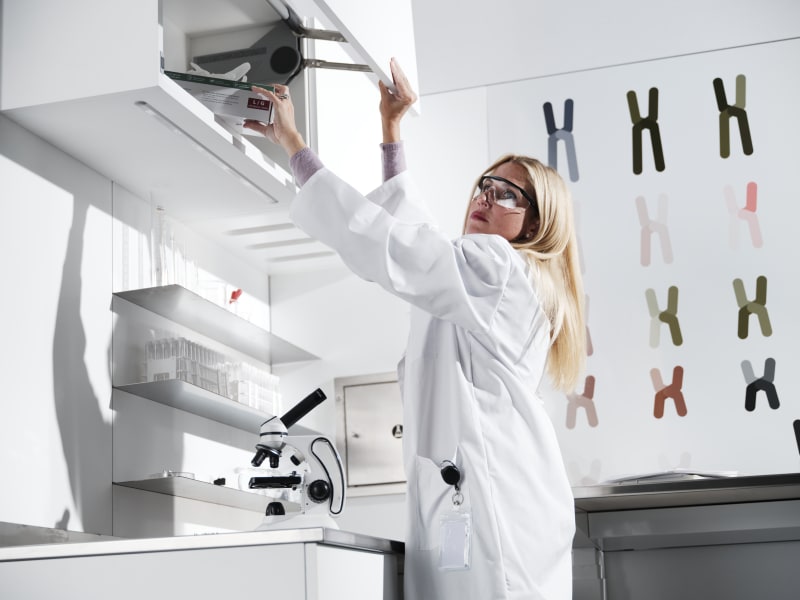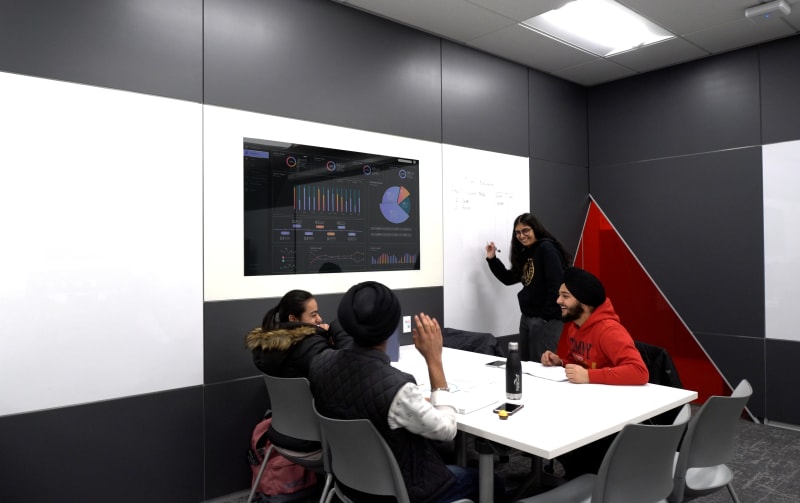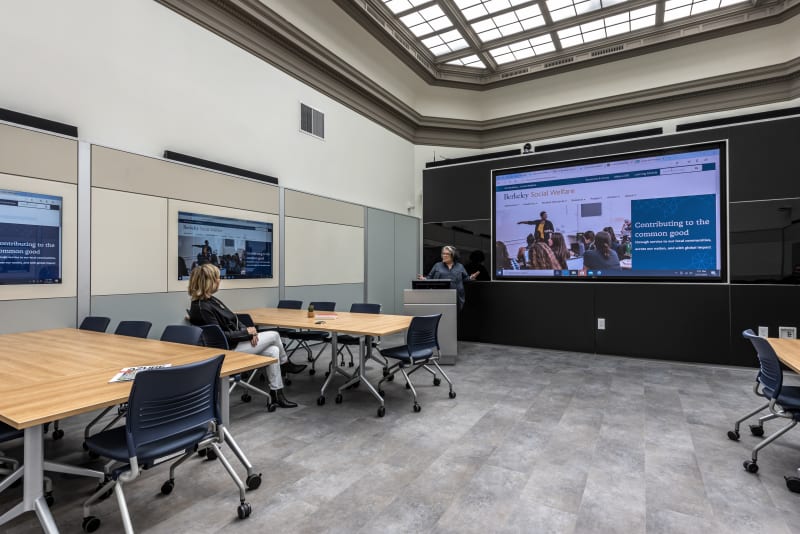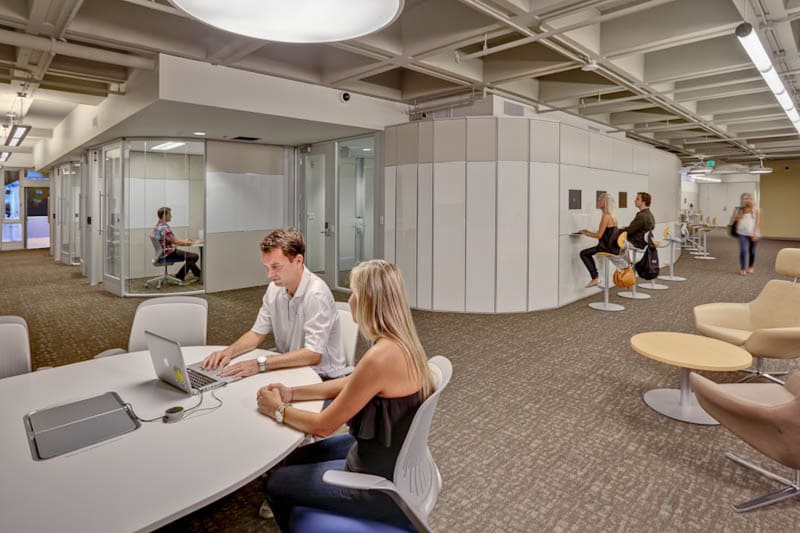The content featured in this article is brand produced
There’s higher demand and more competition than ever for science, technology, engineering and math (STEM) talent.
Employment in STEM occupations has grown 79% in the past three decades. And America’s healthcare industry is projected to grow 13% from 2021 to 2031 — much faster than the average for all occupations.

IMAGE CREDIT: JAMES JOHN JETEL
Post-secondary schools seem to be responding accordingly. According to Building Design + Construction, “For most of the AEC [Architecture, Engineering and Construction] firms interviewed, science, engineering and health sciences comprise the bulk of their higher-ed new construction or renovation.”
These projects aren’t producing learning spaces that look or function the same way they used to though. Colleges are investing in new types of STEM teaching environments to attract students who will become the next generation of scientists, engineers and healthcare professionals.
There was a time when students expected little of learning environments, says Heather Morgan, Education Market Specialist at DIRTT, but that era is over.
“We can expect more from these buildings overall — how they’re designed, how they’re built. We can expect our buildings to support how our work and how learning has changed.”

IMAGE CREDIT: UPPER LEFT PHOTOGRAPHY
Classrooms are going away and all schools want big spaces that can subdivide easily with folding walls. They want to have casework, they want to have storage, they want to have technology, they want to be able to access this technology, no matter where they’re walking through a space.
Heather Morgan, DIRTT Education Market Specialist
She says design changes like these lead to more inclusive learning environments, seamless connections enabled by technology, and more flexible, collaborative use of space.

Warm, welcoming learning spaces offer a competitive advantage
STEM higher-ed learning environments have to evolve. The typical cold, gray lab, research or lecture spaces we associate with college science or health classrooms won’t motivate student enrollment and engagement.
“Students will be attracted to spaces that inherently support how they want to learn. But they also want to know that when they’re signing up for this, they’re actually going to go to a school that is as technologically forward and as supportive as possible,” says Morgan.
“The trend is to move away from concrete block walls with a couple TVs hung on them. Building spaces with embedded technology that use warmer materials such as timber or other biophilic elements, as well as nature-inspired imagery via graphics, helps create environments where students feel physically and mentally safe,” she says.

We’re now trying to design these spaces that are more welcoming to everybody. We recognize that so much of what has been done, intentionally or unintentionally, can exclude groups, where they actually don’t feel safe walking into a space.
Heather Morgan, DIRTT

IMAGE CREDIT: DESIREE BENKO

Connected infrastructure supports high-speed learning environments
Tech-enabled facilities with high-speed connectivity are a must for all college programs, but STEM fields require particularly robust infrastructure to attract students to campus.
Katelyn Chapin, Project Architect at Newman Architects, shares an example of the type of learning that’s supported by highly tech-enabled spaces.
She recalls designing an auditorium in a science department with a 3D projector, suitable for viewing a DNA sequence from all angles. Seating, lighting and speakers in traditional lecture halls don’t account for this type of detail, so the project involved “heavy infrastructure coordination,” says Chapin.
And that’s just the visible space. Connecting with students who are remote or using virtual reality as an on-site learning aid — such as nursing simulation spaces with camera monitoring systems — requires seamless connectivity and high broadband speeds, Chapin says.
The cost of slow connections can be more than waiting for video to buffer or losing connection, explains Morgan. When students are working in labs, for instance, “it might mean a critical failure in their experiments.”
This is why connected infrastructure — such as electrical and network cabling — is so important, she says. State-of-the-art learning tech can’t function without electrical and lighting-fast internet.

Flexible, multipurpose spaces connect STEM with other disciplines
There’s a growing trend in post-secondary education to design multi-disciplinary spaces that can flexibly serve the needs of a range of different academic programs, says Chapin.
This is hardly surprising, considering STEM educators are increasingly turning to “arts integration” as an instructional approach for their programs — and expanded the acronym to STEAM: science, technology, engineering, art and mathematics.

Consider an engineering department, for example. If students build a widget, they then need to market it and pitch the project using shared space and equipment, Chapin says. That shared space and equipment draws on infrastructure and talent from media or business faculties.

“It’s not just the silo of the engineering building, it’s ‘how do these students work with other students on campus?’”
This simultaneously flexible and collaborative approach to shared space is an important part of higher-ed design strategy today, says José Hernández, Principal at Newman Architects.
“That whole planning concept is typically tied to hoteling,” he says, referring to dynamic, short-term use of space that can change as needed. “One of the program criteria we’ve encountered is two groups vying for the same space.”
This is why “right-sizing” during the planning stage, so they can adjust to different needs as they arise, is key, say both Hernández and Chapin.
Future proof design features they reference range from flexible furniture, such as varied seating options, to dynamic interior spaces such as movable walls.
Flexibility isn’t small (or big) differences from one classroom to the next, says Chapin. It’s the ability to make changes on an ongoing basis, be they required daily, weekly or from one semester to another.
“It allows for fluctuations to class size or ‘Oh, we’re gonna have an event. Let’s open this all up.’ Now the space has a totally different function that the university and everyone benefits from.”
This article originally appeared on DIRTT Insights, DIRTT’s editorial platform that shares perspectives from the design and construction industries.














